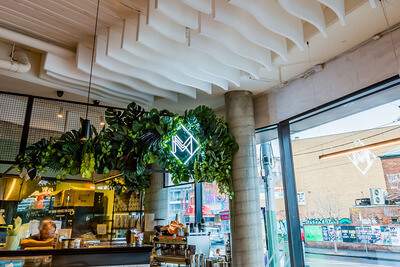One of the primary factors that affects the acoustics of a space is its size and shape. Larger spaces tend to have longer reverberation times, which means that sound waves will continue to bounce off of surfaces and remain in the space for a longer period of time. This can lead to a sense of “echo” or “reverberation” in the space, which can be desirable in some cases (such as in a concert hall), but can also be detrimental to speech intelligibility and music clarity in other cases. On the other hand, smaller spaces tend to have shorter reverberation times, which can result in a “dead” or “dry” sound. The shape of a space can also impact its acoustics, as certain shapes may result in more reflections and standing waves (patterns of sound waves that remain stationary within a space).

Another important factor in interior acoustics is the materials used in the construction of the space. Different materials absorb or reflect sound to varying degrees, and this can significantly impact the acoustics of a space. Hard, smooth surfaces (such as concrete or glass) tend to reflect sound well, while softer, porous materials (such as fabric or carpet) tend to absorb sound. It is important to consider the types of materials used in the construction and furnishing of a space, as well as their location and orientation, when designing for good acoustics.
The presence of noise from external sources (such as traffic or aircraft) can also impact the acoustics of a space. In these cases, it may be necessary to use soundproofing techniques (such as double- glazed windows or heavy doors) to reduce the level of external noise entering the space.
There are several strategies that can be used to improve the acoustics of a space. One approach is to use sound-absorbing materials to reduce the amount of sound that is reflected within the space. This can help to reduce the level of reverberation and improve speech intelligibility and music clarity.
Sound-absorbing materials can be added to the walls, ceiling, or floor of a space, and can be incorporated into furniture or decorative elements. It is important to consider the type and amount of absorption needed, as well as the aesthetic of the space, when selecting sound-absorbing materials.
Another strategy is to use sound-reflecting materials to shape the sound within a space. This can be particularly useful in concert halls and other performance spaces, where a sense of reverberation is desired. Sound-reflecting materials can be used to direct sound towards certain areas of the space, or to create a sense of “envelopment” for the listener.

